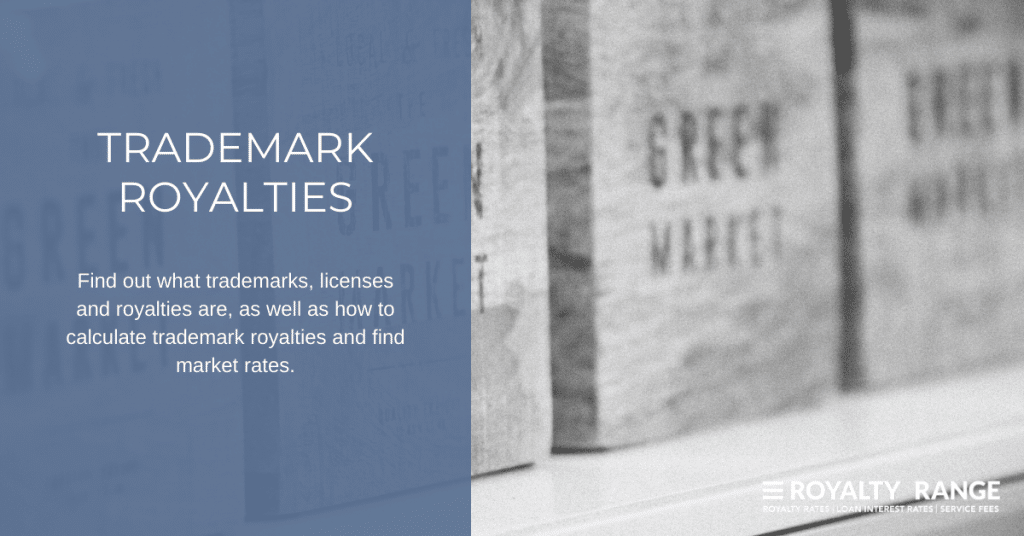Trademark royalties
December 17, 2024

Trademark royalties are the payments a licensee makes to a licensor in exchange for the use of their trademark. Trademark royalty rates are usually a percentage of the revenue generated by the trademark, and ensure that both parties benefit fairly from the trademark licensing agreement.
What is a trademark?
A trademark is a type of intellectual property protection that stops other organizations or individuals using or copying a brand’s identity to sell or market their own products or services. Brand owners can apply to trademark any part of their brand identity that is unique to them, and that identifies and differentiates them – this could be a logo, trade name, slogan or visual design. Basically, a trademark is something that helps consumers recognize a brand and distinguish it from others.
Some examples of famous trademarks are Nike’s ‘Swoosh’ logo and the trade name ‘Google’. Trademarks can also be sounds, such as the lion’s roar that plays before MGM films; designs, such as McDonald’s’ ‘Golden Arches’; and characters, such as Disney’s Mickey Mouse.
A trademark gives the brand owner the exclusive right to make, sell and commercialize products using the trademarked assets, within an agreed geographical scope. It gives the brand owner the right to sue any organization or individual that uses the trademark without their permission.
What is a trademark license?
Trademark owners can choose to license their trademark rights to give licensees the right to make, sell or commercialize products under the licensed trademark, for an agreed period of time, within an agreed geographical scope and under agreed terms. This is known as trademark licensing.
Brand owners might do this to enter new markets, offer consumers new products or to grow their brand without having to manage the product ranges, services or establishments themselves.
Trademarks are often licensed in manufacturing agreements, where a third party manufactures and sells products under the licensed trademark. For example, a fashion designer may license their trademark to a skincare manufacturer to create a new range of cosmetics under the designer’s trademark. The designer benefits because they don’t have to manufacture the products, while the manufacturer benefits as the strength and reputation of the trademark will help them sell more.
Trademarks are also commonly licensed in merchandising agreements (when a brand like Disney permits a clothing manufacturer to print t-shirts featuring Disney characters) and franchising agreements (when a brand owner licenses the rights to their brand assets and business model, so that a franchisee can essentially replicate their business and run it as their own).
All trademark licensing deals are drawn up in a licensing agreement, which is negotiated and agreed between the licensor and licensee. The license agreement outlines the duration of the licensing deal, the territory, exclusivity terms, and exactly how the trademark can be used.
What are trademark royalties?
Trademark royalties are payments made from the licensee to the licensor in exchange for the rights to their trademark. The licensor and licensee will agree a trademark royalty rate in the licensing agreement. A trademark royalty rate is usually a percentage of sales generated from the use of the trademark – for example, 5% of gross or net revenue, paid quarterly.
Calculating trademark royalties
There are a number of different methods you can use to calculate a reasonable trademark royalty rate. Three common trademark royalty calculation approaches are: 1) the cost approach; 2) the income approach; and 3) the market approach. Each of these approaches helps you value the trademark in question and determine a royalty rate that is fair for both the licensor and licensee.
Whichever method you use to calculate trademark royalties, you should always check your rates against comparable market royalty rates to ensure that your royalty rates are fair and accurate.
Finding market royalty rates for trademarks
Finding market trademark royalties is quick and easy with the RoyaltyRange database. All you have to do is tell us your search criteria, and we’ll produce a full report of trademark royalties for you. We only include potentially comparable license agreements in your report, so you can confidently use them for intellectual property licensing, valuation and transfer pricing purposes.
Ready to find market trademark royalties? Use the One Search box on the right to get started.
Request One Search
We will perform the search and deliver the initial results within hours, at no cost.




